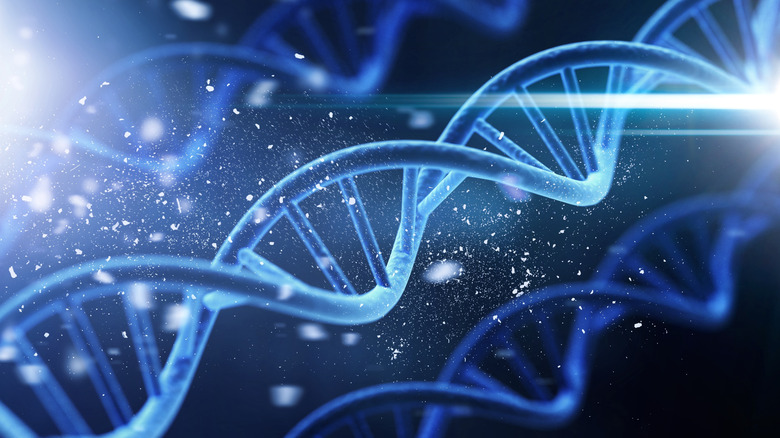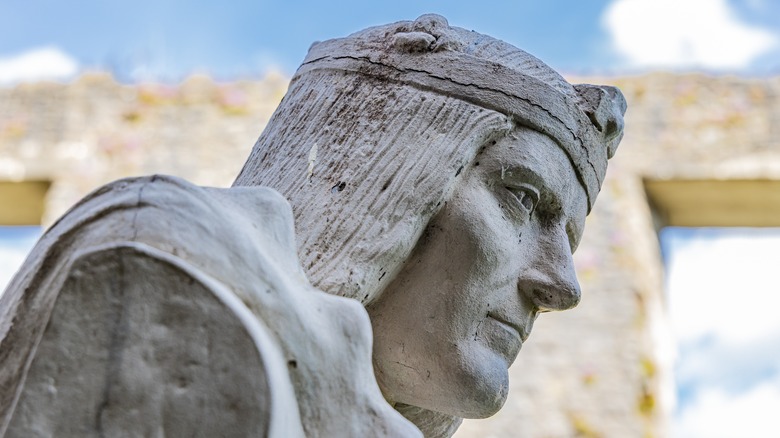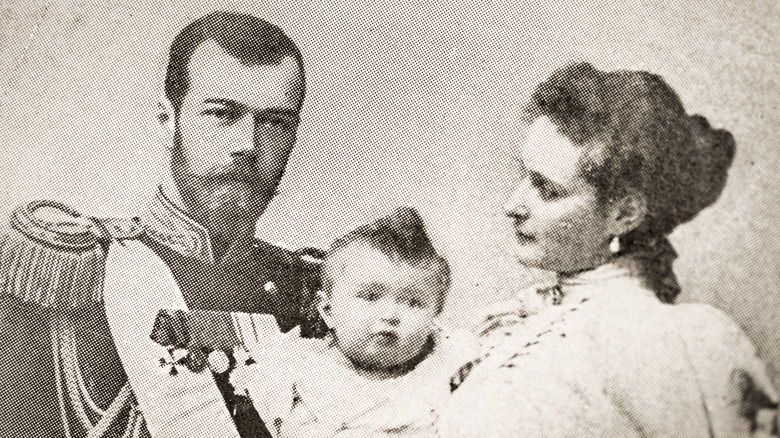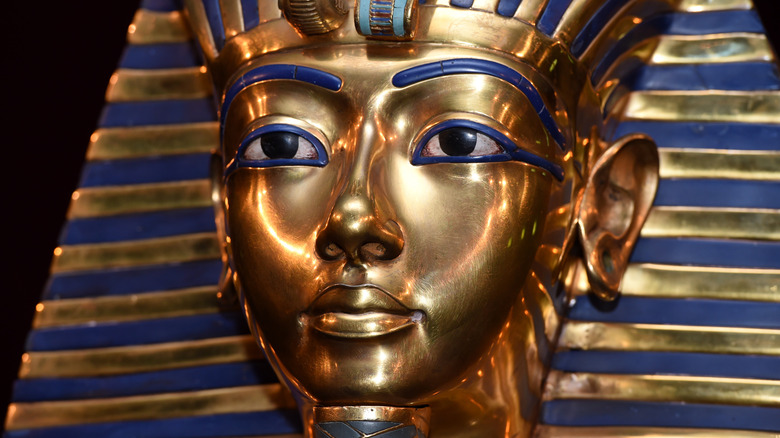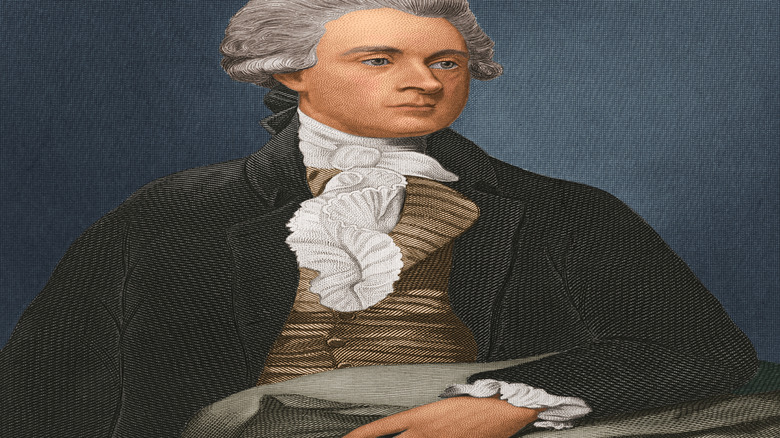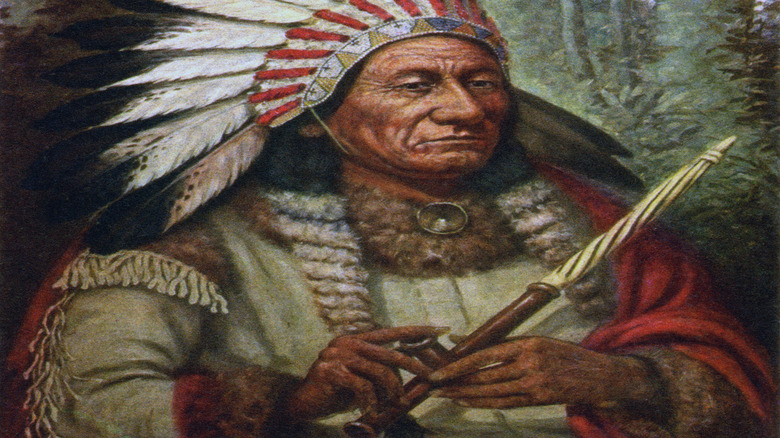8 Fascinating DNA Discoveries About Famous Historical Figures
People were always aware that things like physical features and biological quirks tended to run in families, but no one ever really knew why. The 1940s marked a turning point when scientists finally figured out that it was deoxyribonucleic acid (DNA). Over the following years, they discovered things like the twisted ladder construction, which allows DNA to replicate itself. In 1985, Kary B. Mullis invented the Polymerase Chain Reaction (PCR) method, which gave scientists the ability to make millions of sequence copies in just a few hours. This meant they could turn something like a solitary strand of hair into a treasure trove of genetic information in no time.
By the '90s, we had the Human Genome Project. This worldwide scientific crusade aimed to decode every one of humanity's 3 billion genetic letters. It took well over a decade and cost about a dollar for every letter, but it was a huge success — and it gave us the first-ever complete blueprint of our species. The technological revolution that followed was nothing less than extraordinary. Cutting-edge sequencing technology slashed costs and timeframes to the point where we can now do the same job for less than a few hundred dollars in a matter of hours.
Add in recent breakthroughs, like the sequencing of 50,000-year-old DNA, using AI to recreate a face from DNA analysis, or uncovering that humans evolved from two distinct populations in a shocking twist to the story of human evolution, and you can see how powerful the technology has become. Now that scientists are armed with these revolutionary genetic tools, they are unraveling centuries-old mysteries and transforming our understanding of historical figures. From monarchs found in baffling places to legendary singers whose stories are being rewritten, here are a few famous historical figures — and the secrets revealed by their DNA.
Richard III
In 2012, the Richard III Society suspected the remains of their beloved medieval king were buried under a parking lot in the city of Leicester, England. After just a few hours of excavating, the archaeological team assigned to the task struck historical gold when they discovered human remains exactly where he was thought to be. A DNA test later confirmed the bones to be those of England's last monarch of the Plantagenet dynasty, who sat on the throne for just two years, from 1483 to 1485. The Plantagenet dynasty ruled across 14 monarchs from 1154 until the Battle of Bosworth in 1485, where Richard III met his and the dynasty's end. He was buried at Greyfriars Abbey in Leicester, the site of which eventually became the municipal parking lot in question.
Analysis of the DNA revealed things like eye and hair color, as well as a spinal curvature that matched historical accounts. However, tests also revealed something far more significant: the absence of the royal Y chromosome that should have been inherited through his paternal line. This suggests that at least one child in the family lineage was fathered by someone outside the royal bloodline, raising the possibility that not all the monarchs who came after were of true biological descent. However, today's royal family is unaffected by this discovery because in 1701, the Act of Settlement was passed, granting Parliament control over royal succession after deciding that only Protestants could become rulers. This created an entirely new royal dynasty from Germany called the House of Hanover, from which today's royals are descended.
Beethoven
Ludwig van Beethoven's revolutionary compositions and groundbreaking techniques ensure he is and will always be remembered as one of the most influential figures in classical music. He is also widely known for his progressive hearing loss. Medical experts and historians have long theorized that he also suffered from ongoing digestive problems and liver ailments that may have been worsened by alcohol. Scientists recently tested several locks of the German genius' 200-year-old hair to create a comprehensive genetic portrait. The tests revealed that he did carry a gene variant linked to hemochromatosis, a disorder affecting iron levels that increases liver damage risk, especially when combined with alcohol.
However, researchers also found a surprise in the form of traces of hepatitis B, an infection that likely aggravated his liver problems even more. This would have almost certainly made his final months seriously uncomfortable. The analysis also ruled out celiac disease and lactose intolerance as culprits for his digestive troubles, and failed to pinpoint a genetic explanation for his deafness. However, comparing Beethoven's Y chromosome with those of five living male descendants revealed a misalignment in their genetic signatures, indicating a break in the composer's family tree. This called into question his accepted family history and points to infidelity within his father's ancestral line.
Tsar Nicholas II
Tsar Nicholas II ruled the Russian Empire from 1894 until his abdication in 1917. After failed reforms, massacres, and crushing military defeats, the Bolshevik uprising led to the end of the Romanov dynasty after more than 300 years of rule. Following the abdication, the former tsar and his family were put under house arrest. In the summer of that year, Bolshevik forces brutally executed the entire family and then repeatedly buried and reburied their remains to conceal the evidence. However, rumors persisted for decades that Anastasia, the tsar's youngest daughter, somehow survived the massacre, including rumors generated by Anna Anderson, who claimed to be the duchess.
When a mass grave was found near Yekaterinburg in 1991, investigators could not immediately prove it contained the Romanov family, partly because the Bolsheviks had burned and repeatedly moved the remains. To establish the maternal line, they used a blood sample from Prince Philip, Duke of Edinburgh, a direct descendant of Tsarina Alexandra's sister. The resulting DNA match proved the bones belonged to the family. To put the matter beyond all doubt, scientists also dug up the remains of Nicholas II's father, Alexander III, for final confirmation. The results were irrefutable, ending years of rumor and speculation, including the false claims of Anna Anderson.
Tutankhamun
After initial disappointment when testing Tutankhamun's mummified remains, scientists eventually managed to extract some usable DNA, and the results were fascinating. The DNA results suggest that Tutankhamun's grandparents were Amenhotep III and Queen Tiye, and the mummified remains of non-royal aristocrats Yuya and Thuya as his great-grandparents. However, the biggest reveal was that his father could very well be the religious revolutionary Pharaoh Akhenaten, whom researchers have long thought rested in the Valley of Kings, but could never put a name to the remains. Tests also revealed his mother could be another unknown mummy entombed in the same necropolis and identified as a daughter of Amenhotep III and Queen Tiye.
However, this leads to a scandal fit for ancient tablet gossip columns. If the analysis is correct, it confirms King Tut was born from an incestuous relationship, as the unknown parents were both the offspring of Amenhotep III and Queen Tiye. The plot twists didn't end there either. CT scans revealed that King Tut had physical deformities in his legs and feet, which could explain why 130 or so walking sticks were found in his tomb. Some believe this might be why he is depicted as sitting down on shrine reliefs while hunting and performing archery.
Thomas Jefferson
Two centuries of whispered accusations have shadowed Thomas Jefferson. They allege the nation's third president and chief architect of the Declaration of Independence conducted a clandestine relationship with, and fathered the children of, Sally Hemings, an enslaved woman on his Monticello plantation. In 1998, a retired UVA pathologist named Dr. Eugene Foster led the first DNA investigation into unlocking the genetic truth. DNA from the former president himself wasn't used because his descendants opposed exhuming his remains. So, samples were extracted from his various family members instead. Among the relatives were descendants of Jefferson's paternal uncle, Sally Hemings' children, and three of Jefferson's nephews, who were also suspected of fathering the children.
The results showed a perfect Y chromosome match between the Jefferson lineage and Hemings' last child, Eston. However, because the Y chromosome is usually common to every male in a family lineage, the test couldn't single out the former president himself. Jefferson's brother, Randolph, lived only 20 miles away, and Randolph's sons were of an age where they could also have fathered children. However, Jefferson's documented travels and the timings of the births show him to be at Monticello during each conception window. Statistical modeling delivers a damning verdict on this, showing only a 1% probability that Thomas Jefferson was not the father.
Jesse James
The story goes that in 1882, Robert Ford, a member of Jesse James' gang, shot the infamous outlaw after secretly arranging to claim the state reward for his capture. Yet for decades, rumors persisted that James had faked his own death by having Ford kill another man instead. Those doubts grew louder in 1948 when a man named J. Frank Dalton publicly claimed he was Jesse James. However, in 1978, two teeth and two hairs were removed from the gunslinger's alleged grave in Missouri, possibly in the hope that future science might make use of them and solve the mystery.
By the mid-1990s, DNA profiling had been developed, and in 1995, Missouri staged a high-profile exhumation to resolve the controversy. However, the bones turned out to be too degraded for DNA testing, which would have limited the evidence. But the ceremony itself gave cover for scientists to use the preserved 1978 teeth and hair, which were subject to authenticity concerns because they weren't collected under controlled scientific practices. As it turned out, those samples matched the DNA of maternal-line relatives, which strongly supports the claim that the man buried in Missouri really is Jesse James.
Elvis Presley
While the samples used have not been proven beyond doubt to be those of Elvis Presley, genetic analysis of hair allegedly belonging to the King of Rock and Roll reveals a series of defects lurking in his DNA. Among the quirks identified were genetic tendencies toward his known issues like migraines, glaucoma, and weight problems, which add credibility to the likelihood that the hair really did belong to Elvis. Crucially, a chromosome 11 variant associated with hypertrophic cardiomyopathy was also found, which is a potentially fatal heart condition that may have played a part in the legendary singer's tragic passing in 1977.
The media had long pointed the finger at the singer's legendary appetite and drug dependency for his death, but this genetic evidence unveils a deeper story of biological vulnerability. Nobody is saying Elvis didn't live a life of excess, but these revelations show that his genes may have also been working against him. And given that scientists now realize much of our so-called "junk DNA" plays a vital role in gene control, which can have major impacts on health, the genetic picture may be even more complicated than we think.
Chief Sitting Bull
Chief Sitting Bull was the Hunkpapa Lakota leader who successfully united Plains tribes and orchestrated General Custer's crushing defeat at the Battle of the Little Bighorn in 1876. Over a century later, his great-grandson Ernie LaPointe began seeking recognition of his lineage to the legendary leader so he could legitimately represent the chief's legacy and have a say in how his remains and memory should be treated. Historical documentation, such as birth certificates, death records, and genealogical trees, already showed LaPointe's ancestral truth, but he sought DNA analysis for scientific validation.
After 14 painstaking years, scientists finally managed to extract usable DNA from a severely degraded lock of Sitting Bull's hair that was preserved in the vaults of the Smithsonian. The genetic comparison between the ancient lock and DNA from Ernie LaPointe and his sisters confirmed the relationship. It was a landmark breakthrough, as it marked the first successful confirmation of an ancestral link between a living individual and a historic figure using severely limited and degraded DNA fragments.
This breakthrough demonstrates a wider truth about the power of genetic analysis. Even outside of human history, recent work sequencing earthworm DNA has challenged what we know about evolution. It reminds us that every strand of DNA, whether from a great chief or a humble worm, has the power to reshape the story of life itself.
